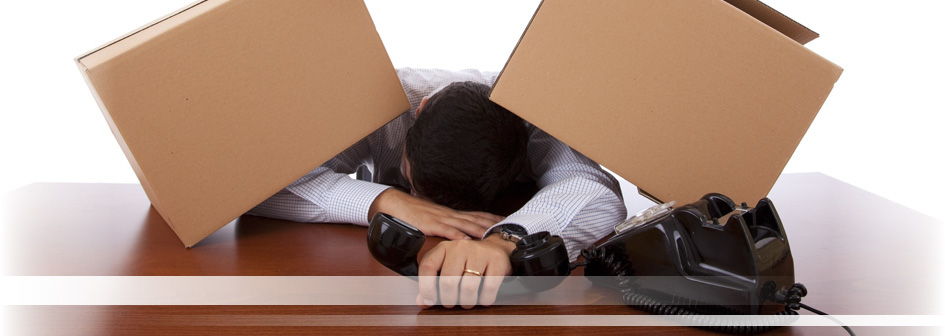Packing Success: How to Move Like a Pro
Posted on 26/05/2025
Packing Success: How to Move Like a Pro
Introduction: Mastering the Art of Moving
Embarking on a house move can be both exhilarating and overwhelming. Whether you're relocating across town or setting roots in a new city, proper packing techniques are crucial to ensure your belongings arrive safely and seamlessly. This comprehensive guide will help you achieve Packing Success and teach you how to move like a professional.

Why Packing Smart Matters
Many underestimate the impact that organized packing has on the overall moving experience. Efficient packing not only protects your possessions but also:
- Reduces the risk of breakage and loss
- Makes unpacking easier and quicker
- Saves time on moving day
- Minimizes stress and confusion
- Lowers moving costs by reducing volume and weight
Read on to discover expert-approved packing tips for a streamlined and successful move!
Packing Like a Pro: The Ultimate Step-by-Step Guide
Step 1: Plan and Prepare Before You Pack
Preparation is half the battle. Start by creating a moving checklist. Map out your timeline, gather supplies, and inform relevant parties about your move.
- Download an editable moving checklist or make your own tailored to your needs.
- Notify utility companies, schools, doctors, and any subscription services about your new address.
- Set a packing schedule and stick to it, allocating time to each room or category.
Step 2: Declutter and Downsize
To move like a professional, only take what you truly need. Downsizing not only lightens your load but also saves you time, energy, and money.
- Sort items into keep, donate, sell, and discard piles.
- Host a garage sale or use online marketplaces to earn extra cash from unwanted items.
- Arrange pickups or drop-offs for donations well ahead of the moving date.
Step 3: Gather Essential Packing Supplies
Quality supplies form the foundation of successful packing. Stock up on:
- Strong moving boxes in various sizes
- Bubble wrap, packing paper, and moving blankets
- Packing tape and dispensers
- Permanent markers and labels
- Specialty boxes for artwork, electronics, and fragile items
- Stretch wrap for securing furniture
Tip: Don't skimp on packing materials--using cheap or reused boxes for heavy items leads to breakages.
Step 4: Pack by Category, Not by Room
While it might seem logical to pack by room, professional movers often pack similar items together for better organization and safety. For example:
- Group all books in sturdy small boxes
- Pile all fragile kitchenware together, wrapped individually
- Bundle all electronics and cables with their accessories
Step 5: Protect Your Belongings Like a Pro
Proper wrapping techniques reduce the risk of damage during transit. Here's how to safeguard your items:
- Wrap glassware and ceramics in bubble wrap or packing paper, then stack vertically in boxes.
- Use towels or linens between plates and bowls for extra padding.
- Double-box especially delicate items, like collectibles or heirlooms.
- Dismantle large furniture, bag screws and bolts, and tape them securely to their parent piece.
- Secure mirrors and artwork with corner protectors and place them in special boxes whenever possible.
Step 6: Maximize Space and Minimize Risk
Strategic box filling is key to packing success. Remember:
- Heavier items, such as books, go in smaller boxes; lighter items in larger boxes.
- Fill voids with soft goods like clothing or linens to prevent shifting.
- Don't overfill boxes--lids should close flat with little resistance.
- Keep weight balanced and manageable.
Step 7: Seal, Label, and Inventory
Secure all boxes with strong tape. Clearly label each box with its contents and destination room. For added efficiency:
- Use color-coded labels or stickers for easy identification.
- Assign each box a number and record its contents in a written or digital inventory list.
- Mark boxes containing fragile items with a warning on each side.
Pro Tips for Special Categories
How to Pack Clothes Efficiently
- Leave clothes on hangers and use wardrobe boxes for delicate or formal wear.
- Roll casual clothing to save space and reduce wrinkles.
- Use suitcases for heavy garments like jeans and coats.
Packing the Kitchen Like a Pro
- Pack an "essentials" box with must-have items (kettle, mugs, snacks, utensils).
- Wrap knives in dish towels and secure with tape, blade edge facing cardboard.
- Bundle spices and condiments in sealed bags to avoid spills.
Moving Electronics Safely
- Where possible, use original packaging for TVs and small appliances.
- Take photos of cable setups for easy reassembly at your new home.
- Label all chargers, cables, and remotes clearly.
Handling Valuable and Important Documents
- Pack vital documents (passports, birth certificates, financial papers) in a clearly labeled, waterproof folder.
- Keep documents with you rather than loading them on the moving truck.
Moving Day: Professional Load and Unload Techniques
- Load heavier boxes first and distribute weight evenly in the moving vehicle.
- Use moving straps and dollies to reduce strain and injuries.
- Keep an essentials bag with medications, chargers, toiletries, and snacks handy.
- Once at your new home, always unload boxes into the correct rooms based on their labels--this speeds up unpacking and gets you settled faster.
Common Packing Mistakes (And How to Avoid Them)
- Leaving packing to the last minute: Begin at least a month in advance, focusing on infrequently used items first.
- Using oversized boxes for heavy items: This leads to broken boxes and injuries. Always use small boxes for weighty contents.
- Neglecting to label boxes: Increases confusion and time during unpacking. Be specific with your descriptions.
- Overpacking boxes: Resist the urge to make one heavy box instead of two lighter ones!
- Forgotten essentials: Pack a survival kit with first-night necessities and keep valuables with you during the move.
Unpacking and Settling In: The Final Step to Success
The process doesn't end when the truck unloads. Here's how to tackle unpacking like a moving pro:
- Kick off with essentials--unpack bedrooms, bathrooms, and the kitchen first.
- Assemble and arrange furniture before opening decor or non-essential boxes.
- Break down boxes and dispose of packing materials as you go for a clutter-free environment.
- Refer to your inventory to ensure all items arrived safely.
Packing Success: Your Pro-Level Move Checklist
- Start Early: The earlier you begin, the more manageable your move will be.
- Be Ruthless About Decluttering: Less stuff means less to pack, move, and unpack!
- Invest in Quality Supplies: Protect your valuables and cut down on mishaps.
- Stay Organized: Lists, labels, and timelines are your best friends.
- Label Clearly and Thoroughly: This paves the way for stress-free settling in.
- Keep an Essentials Bag: You'll thank yourself on moving day!
Frequently Asked Questions (FAQs) About Packing and Moving
1. What supplies do I really need for a successful move?
At minimum, stock up on:
- Durable boxes in various sizes
- Bubble wrap and packing paper
- Strong packing tape
- Markers and labels
2. When should I start packing for my move?
Begin packing non-essential items 4-6 weeks before your move, and work up to daily-use items--finish these the day before.
3. How do I pack fragile items for moving?
Wrap each item individually with bubble wrap or paper, place in double-walled boxes, and pad all empty spaces. Mark boxes as fragile on all sides.
4. Should I hire movers or DIY?
This depends on your budget, timeline, and volume of goods. Full-service movers can save you time and effort, but DIY moving offers more control and is often less expensive.
5. What should I pack in my essentials box?
- Toiletries, medication, and basic first aid
- Change of clothes (including pajamas)
- Bed linens and towels
- Snacks, water, coffee/tea, and minimal cookware
- Chargers and key electronics

Conclusion: Move Like a Pro and Embrace Packing Success
Whether you're a first-time mover or a seasoned nomad, implementing these professional packing tips will streamline your move, preserve your possessions, and reduce stress. Remember, packing success hinges on smart planning, methodical execution, and staying organized every step of the way. So, gather your supplies, make your lists, and move forward with confidence--because now you know exactly how to move like a pro!
Ready for Packing Success?
Start your next chapter on the right foot. With these packing success techniques, you'll transform a daunting task into a triumph of organization, ensuring your move is smooth, efficient, and--most of all--stress-free.








